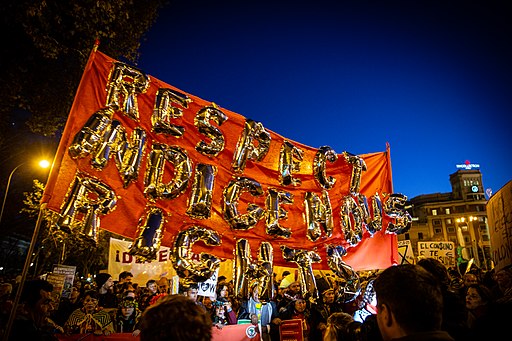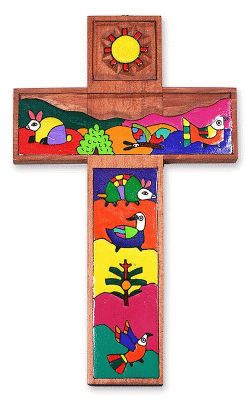
(More information below.)
In 2015 at the conclusion of the UN Climate Change Conference (UNCCC) COP21, the 196 participating nations produced a treaty aimed at addressing climate change. Called the Paris Agreement, it was the first time a COP document stated that the world’s efforts to deal with the climate crisis needed to incorporate Indigenous ecological knowledge. To quote from the COP21 report: “Parties acknowledge that adaptation action should . . . be based on and guided by the best available science and, as appropriate, traditional knowledge, knowledge of Indigenous peoples and local knowledge systems . . . (Article 7.5).
After last year’s COP26 conference in Glasgow, an article published by the UNCCC reported that the effort initiated at COP21 to draw on Indigenous knowledge would continue. According to Rodion Sulyandziga (of the Udege people, from Krasnyyar, Primorski Kray, Russian Far East and a member of the UNCCC’s Local Communities and Indigenous Peoples Platform Facilitative Working Group), “This is a strong achievement and historic progress under the UNCCC, to bring the Indigenous knowledge holders to the table to voice solutions and humanize the impacts of climate change.”
In 1988, the climatolgist James Hansen provided scientific evidence for global warming at a Congressional hearing that is now considered by many to be a historically significant moment in our awareness of the threats posed by climate change. Of course, as we know, political efforts around the globe to address the crisis have thus far fallen short of what actions are needed to avoid the worst effects of climate change. This despite the fact that the science behind climate change has been confirmed in numerous statements by scientific societies and governmental agencies. Indeed, over the past forty years scientists have increased their research efforts to understand the dynamics behind climate change and how to reverse its effects as much as possible. According to Scopus, a major citation database in the sciences, the number of 1988 publications tagged with “climate change” as a subject was 567. By 2021, it was 46,934 (as of January 21, 2022).
Though quite modest in number compared to the thousands of articles focusing on the more general topic of climate change, a similar increase occurred in the number of articles tagged with “traditional ecological knowledge.” Here is the US Fish & Wildlife Service (USFWS) definition of this type of knowledge:
Traditional Ecological Knowledge, also called by other names including Indigenous Knowledge or Native Science, (hereafter, TEK) refers to the evolving knowledge acquired by Indigenous and local peoples over hundreds or thousands of years through direct contact with the environment. This knowledge is specific to a location and includes the relationships between plants, animals, natural phenomena, landscapes and timing of events that are used for lifeways, including but not limited to hunting, fishing, trapping, agriculture, and forestry. TEK is an accumulating body of knowledge, practice, and belief, evolving by adaptive processes and handed down through generations by cultural transmission, about the relationship of living beings (human and non-human) with one another and with the environment. It encompasses the world view of Indigenous people which includes ecology, spirituality, human and animal relationships, and more.
US Fish & Wildlife Service. “Traditional Ecological Knowledge for Application by
Service Scientists.” Accessed January 21, 2022. https://www.fws.gov/nativeamerican/pdf/tek-fact-sheet.pdf
In 1988, there were six publications tagged with “traditional ecological knowledge”; in 2021 there were 466 (as of January 21, 2022). Here is an example – a summary appearing the National Park Service’s website of a research article published last year:
This article begins with a presentation of new research which found that “Indigenous-created forest gardens of the Pacific Northwest support more pollinators, more seed-eating animals and more plant species than supposedly “natural” conifer forests surrounding them.” This counters the long-held belief of western scientists and land managers that ecological conservation requires the absence of people. The focal point of this new research is the analysis of forest gardens’ functional diversity, which captures an ecosystems ability to feed animals (among other measures). Compared to traditional measures of diversity, how many species are found in an ecosystem, functional diversity seems to be a better indictor of ecosystem health. This is demonstrated by the fact that these gardens have survived 150 years without maintenance. In addition to documenting these important findings, a goal of this paper, titled “Historical Indigenous Land Use Explains Plant Function Trait Diversity”, was to provide tribes with citable scientific literature that may be useful as they push for co-management and management agreements. The authors hope their research, by helping Indigenous communities use the land again, will bring the gardens back.
National Park Service. Traditional Ecological Knowledge. “TEK vs Western Science.” Accessed January 21, 2022. https://www.nps.gov/subjects/tek/tek-vs-western-science.htm
Another article, published this year, presents a case study where TEK is applied in a scientific project designed to combat the destructive effects of climate change.
Indigenous communities are often on the front-lines of climate change, and for tribes such as the Pointe-au-Chien Indian Tribe (PACIT) that make their homes and livelihoods in the dynamic landscapes of Coastal Louisiana (USA), sea-level rise, subsidence, and land loss are very real reminders of why they must continue to hone their adaptive capacity that has evolved over many generations and continues to evolve as the pace of change quickens. PACIT members have an inherited wisdom about their surrounding environment and continue to build on that body of observational knowledge that is passed from generation to generation to sustain themselves in this dynamic landscape. This knowledge is woven through their culture and is sometimes referred to as traditional ecological knowledge (TEK). The PACIT and other Indigenous communities around the world are using creative strategies to adapt to the impacts of climate change that include partnering with researchers to combine their TEK with science in approaches to enhance strategies dealing with climate change impacts, mitigation, and adaptation. . . . Better inclusion of their knowledge into applied research is necessary to support these communities in their efforts to make sure their knowledge is recognized, understood, and valued in environmental management applications.
Bethel, M. B., D. H. Braud, T. Lambeth, D. S. Dardar, and P. Ferguson-Bohnee. “Mapping Risk Factors to Climate Change Impacts Using Traditional Ecological Knowledge to Support Adaptation Planning with a Native American Tribe in Louisiana.” Journal of Environmental Management 301, no. 1 (2022).
What is common to both research articles is the recognition that modern scientific efforts to mitigate the damage caused by global warming and climate change should seriously consider Indigenous people’s “inherited wisdom” as a resource. We are only beginning to explore how much we need to incorporate Indigenous wisdom or TEK into the way we live on this planet. It may be that we need it a great deal more than we realize today.
Photo: Marcha por el clima on 6 December in Madrid (during COP21). Organisers estimated 500,000 people attended the protest march. Greta Thunberg was there and read a short statement to the crowd at the end. A manifesto – The World Woke Up Facing A Climate Emergency – for climate justice and climate action was read to the crowd by various people from different organisations and constituencies. A concert then followed entertaining people into late into the night. The march was lead by Fridays for Future students, Chileans and Indigenous people.







